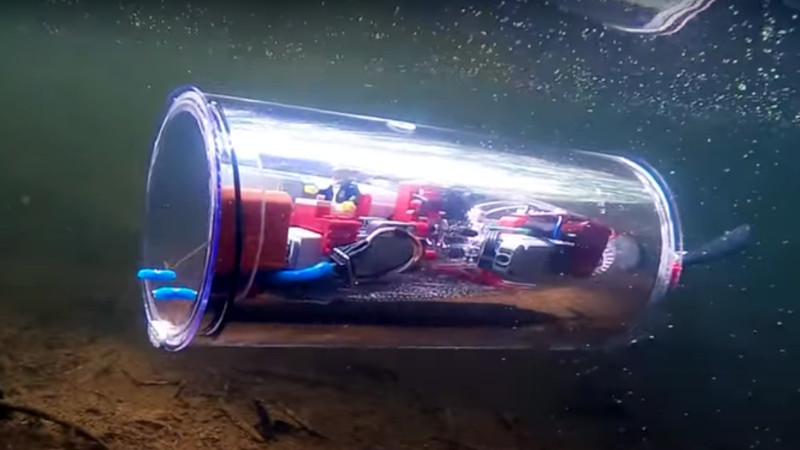A submarine is by necessity a complex and safety-critical machine, but the principle upon which it depends is quite simple. The buoyancy is variable by means of pumping water in and out of tanks, allowing the craft to control the depth at which it sits. The [Brick Experiment Channel] has a series of posts describing in detail the construction of a working submarine, with a hull made from a plastic tube and mechanics made from Lego.
In this submarine the buoyancy tank is a syringe operated by a Lego motor, and the propulsion comes courtesy of a pair of Lego motors driven through ingenious magnetic couplings to avoid a shaft seal. To monitor depth there is both a laser distance sensor and a pressure sensor, and there is a Raspberry Pi Zero to control the whole show.
In the video below the break you can see the craft in action as it zips around a swimming pool at different depths, before setting off on a longer journey with on-board footage along a shady creek. It’s an extremely practical submarine, and one we wish we could try.
This is version 4.0, and it shows. We had a look at version 3.0 last year, and it’s by no means the first submarine we’ve featured, here’s one made from PVC pipe.
Thanks for the tip, [Brianmanden]!















This is such an awesome project. I’ve thought a lot about how to eliminate through-hull mounting using neodymium magnets and this is a very good implementation. Simple too. For RC military subs I was thinly sort of a linear actuator where the serve inside moves a stick with a magnet on the end and on the outside of the hull another pushrod with another magnet goes to the control surface. Clear plastic tube with endcaps much, much better than that complex 3D printed attempt linked here a couple days back.
Love this Lego project thanks
I’ve always wanted, but never made time for a sub project, but now I’m absolutely sure that if I ever do one it’ll have a little lego captain inside.
Spectacular! Now autonomous mode with AI recognition of fish objects please. I should read the project files, but curious what the expected depth capability using the o-ring seals shown.
After reading the project blog, maximum depth was not tested, but the hull was watertight down to 1.5 meters.
Most RC subs groups consider 6ft (2m) a good max depth because you can’t see it from surface much past that.
What’s the product name of the low friction tape?
Regards
Jan
It’s pleasing watching this channel’s evolution. From when HE figures out PID loops and then plies that to this video